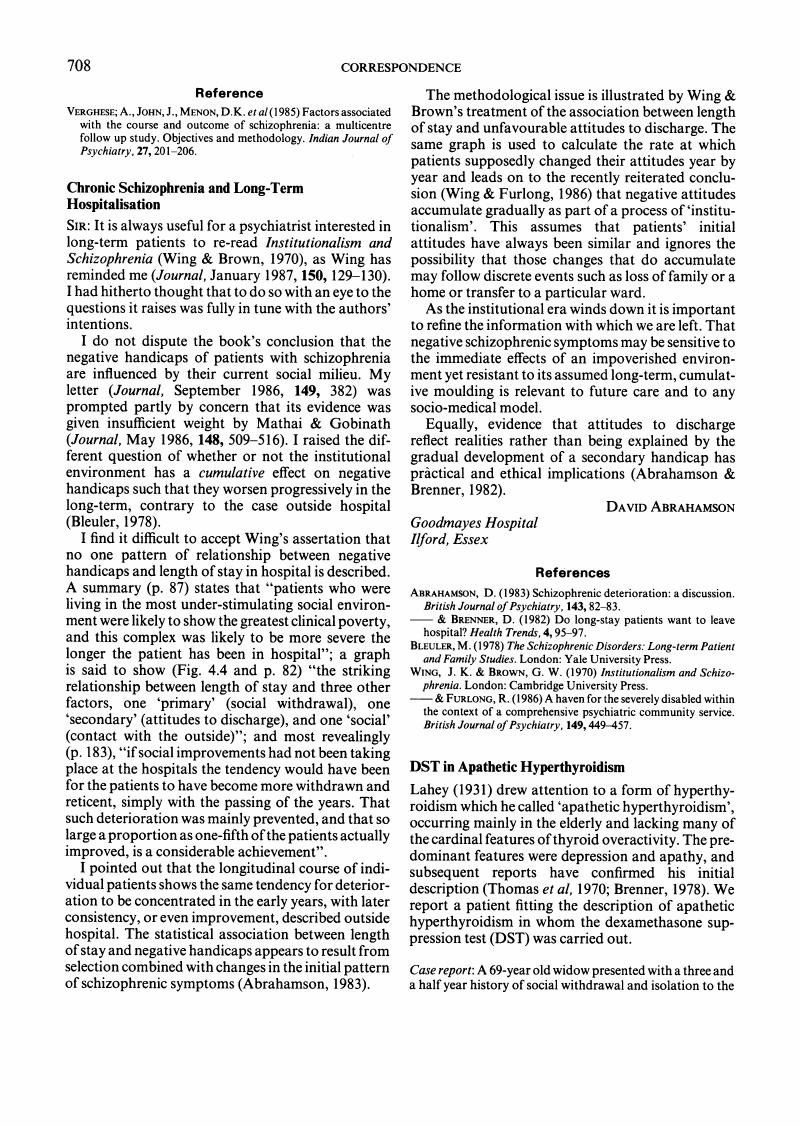No CrossRef data available.
Article contents
DST in Apathetic Hyperthyroidism
Published online by Cambridge University Press: 02 January 2018
Abstract
An abstract is not available for this content so a preview has been provided. As you have access to this content, a full PDF is available via the ‘Save PDF’ action button.

- Type
- Correspondence
- Information
- Copyright
- Copyright © 1987 The Royal College of Psychiatrists
References
Brenner, I.R.A. (1978) Apathetic hyperthyroidism. Journal of Clinical Psychiatry, 39, 479–480.Google Scholar
Kronfol, Z., Greden, J.F., London, M., Feinberg, M. & Carroll, B.J. (1982) Application of biological markers in depression secondary to thyrotoxicosis. American Journal of Psychiatry, 139, 1319–1322.Google Scholar
Laley, F.H. (1931) Non-activated (apathetic) type of hyperthyroidism. New England Journal of Medicine, 204, 747–748.Google Scholar
Martin, R.S. & Waltz, G.W. (1984) DST not affected by conditions producing secondary depressions. American Journal of Psychiatry, 141, 151.Google Scholar
Thomas, F.B., Mazzaferri, E.L. & Skillman, T.G. (1970) Apathetic thyrotoxicosis: a distinctive clinical and laboratory entity. Annals of Internal Medicine, 72, 679–685.CrossRefGoogle ScholarPubMed



eLetters
No eLetters have been published for this article.